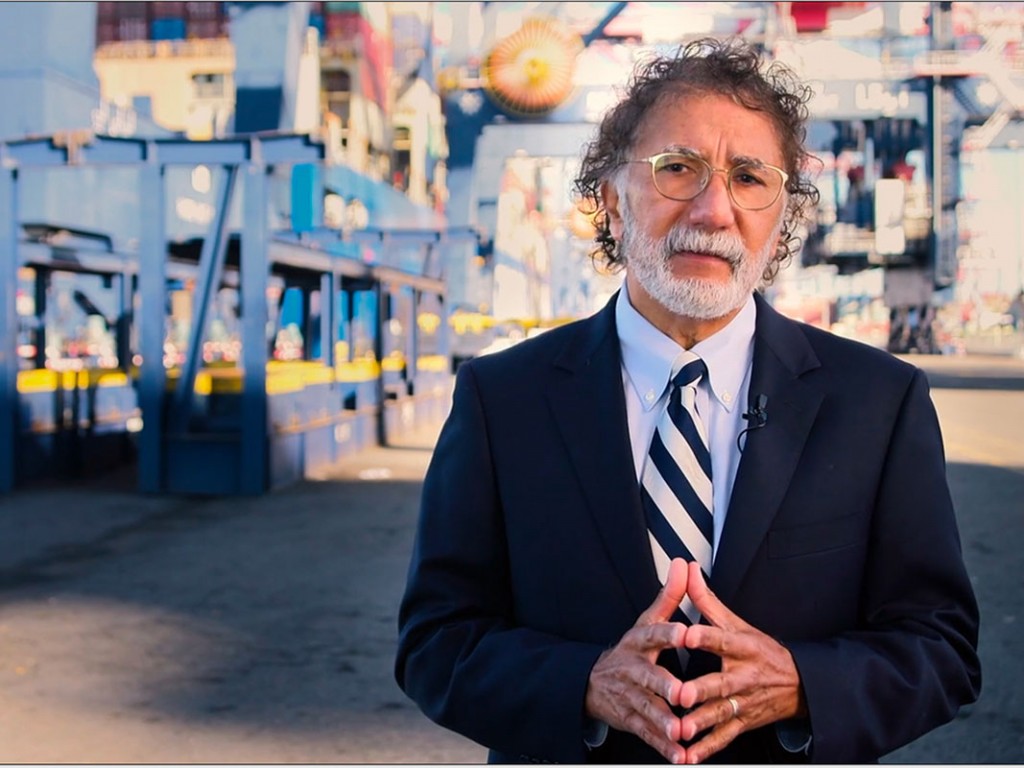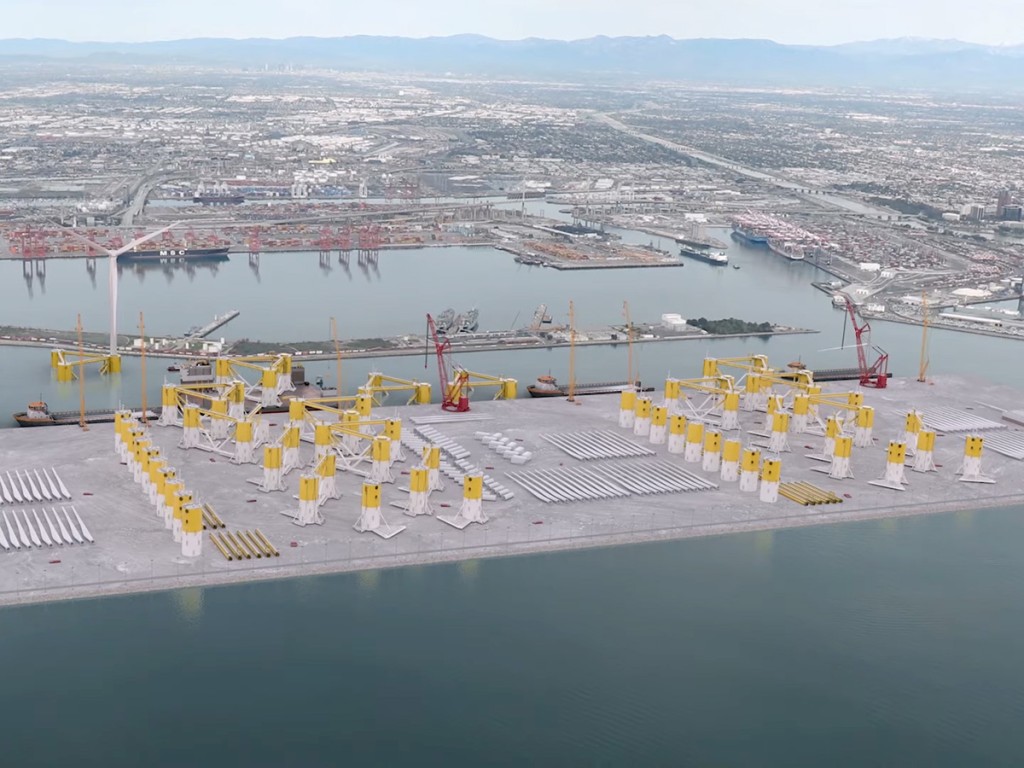Cordero calls for more collaboration in State of the Port Address
Port of Long Beach Executive Director Mario Cordero called on more collaboration between the Ports of Long Beach and Los Angeles citing the need to increase the two San Pedro Bay ports’ competitiveness as the number one port complex in the United States.
Speaking at the Port of Long Beach’s ‘State of the Port’ on January 17th, 2024, Cordero said: “The San Pedro Bay complex remains the number one gateway in the nation by far … at the end of the day, the number that we need to watch is what these two ports move together. We average anywhere between 1.4 to 1.5 million (TEUs) a month … as we approach the end of the decade, we will be moving 2 million TEUs at the end at each month. So … the big question is … not whether one port moves more TEUs than the other on any given month … The San Pedro Bay complex needs to maximize our collaboration to continue to compete. And the big number is what we … move together.”

Cordero highlighted the following 2023 developments:
• The Port of Long Beach regained its position as the second largest port in the United States: “We regained our number two position. Now I will say June and July, we had some tough numbers at the Port of Long Beach. However, in October, and November, we moved more TEUs than any other port in the country.”
• The Port closed 2023 with 8,018,668 TEUS moved, down 12.2% from 2022 and slightly ahead of pre-pandemic levels reported in 2019. Imports declined 12.7% to 3,804,356 TEUs and exports decreased 9.4% to 1,282,437 TEUs. Empty containers moved through the Port were down 12.7% to 2,931,876 TEUs.
As the centerpiece of the Port’s on-dock rail projects, the state-of-the-art Pier B On-Dock Rail Support Facility will move freight faster and more sustainably. Cordero reported: “We now have commitments of $643 million in grants to help us build that important project - and more than $500 million of that was awarded in 2023 … The Pier B showcase will allow for faster, cleaner movement of freight by eliminating rail bottlenecks and reconfiguring several roadways in our north harbor area. The impacts of Port operations will be lessened for our neighbors around the harbor complex and communities along our freight corridors. The project will create more than 1,100 good-paying jobs and ultimately increase the proportion of cargo moved by on-dock rail. The reconfiguration and expansion of the rail yard will amplify cargo velocity, increase terminal capacity, lower the cost of doing business in the Port, and, in turn, make our Port even more attractive as a cargo gateway. Pier B’s benefits will not end at the Port's property line. We will link to a future 4,000-acre intermodal hub in Barstow being developed by BNSF — the Barstow International Gateway. There, cargo containers will be reprocessed and moved along the BNSF (Burlington Northern Santa Fe Railroad) network to the East.” The project “will double the size of the existing Pier B rail yard to 171 acres and more than triple the volume of on-dock rail capacity handled annually to 4.7 million twenty-foot equivalent units (TEUs) … Meanwhile, we recently learned logistics provider Duncan & Son will team up in this year with Union Pacific — for a new, unique rail-haul service to Phoenix from Long Beach — a route typically served by trucks.” In addition, “Pier B will enhance the Port’s competitiveness, maintain its role as an economic force for the region and serve as a sustainability model for ports in the U.S. and abroad. We’re rebuilding, electrifying equipment and decarbonizing operations while developing the skilled human talent,” according to Long Beach Harbor Commission President Bobby Olvera Jr.

Pier Wind Project
Cordero thanked the Port’s Chief Harbor Engineer Suzanne Plezia for her efforts advancing Pier Wind, a proposed 400-acre terminal designed to facilitate the assembly of offshore wind turbines, which would be towed to wind farms in the ocean off Central and Northern California. If approved, the proposed Pier Wind project would be the largest facility of its kind in the nation and would help California meet its goals for renewable energy sources.
More than $792 million in grants from federal, state, and local sources were secured in 2023, marking a record year of public investments for infrastructure, security and clean air initiatives that will further the Port of Long Beach’s goal to transition to zero-emission cargo handling by 2030 and zero-emissions trucking by 2035.
In July 2023 the California State Transportation Agency announced: “that our green port was awarded a record state investment of $383 million to accelerate zero-emissions projects and advance the Pier B modernization … $224 million is for innovative air quality projects including zero-emission tugboats, shore power for liquid bulk ships, and much more. It was the largest grant ever from the State of California to any port - a real game changer for our ongoing efforts to spur job creation and cut emissions.”
Cordero said he anticipates additional funding for several projects, including the Port’s effort to develop a “hydrogen hub” that would fuel cargo-handling equipment with zero-emissions technology. Cordero said: “In October last year, the U.S. Department of Energy announced the award of up to $1.2 billion to a public-private partnership to lead California's bid to create a hydrogen hub. This is the “Arches” project funding we have been pursuing with our statewide partners … We expect to hear soon which of our many proposed hydrogen projects will be funded, as we bring this clean fuel into operations at the San Pedro Bay Ports complex. These funds, intended as seed money to be matched by the Port and our tenants, will support the robust deployment of hydrogen fuel cell cargo-handling equipment, as well as mobile hydrogen fueling trucks or stations in the terminals, and later, drayage trucks.”
© Copyright 1999–2024 American Journal of Transportation. All Rights Reserved

